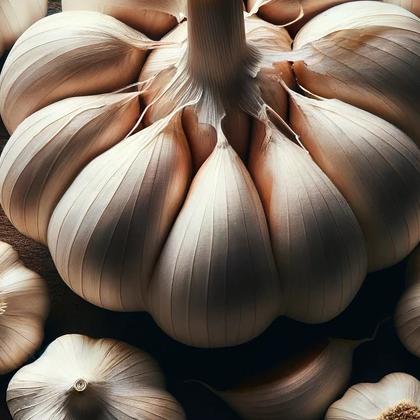Showing results for 'Garlic'
close
Garlic

Garlic is a bulbous plant that is grown in mild temperatures all year round. The bulb is divided into cloves and can be used raw or cooked. Garlic is mostly commonly used as a seasoning to flavor meats, poultry, fish, vegetables, sauces, and starches.
Garlic Pairs With:
Food Item
Flavor Affinity Level

Did you know there are 442 food flavor pairings in my database for Garlic available. What you are seeing above is a random list of 30 items which pair with Garlic.
For the entire list, beautifully formatted, enter your email address and click the download button below, then I'll email it to you as a PDF.
Garlic Properties:
| Food Property | Type | Description |
|---|---|---|
| Flavor Profile | Sweet | Garlic is not typically sweet but can have a slightly sweet undertone when roasted |
| Sour | Garlic can have a sharp, tangy/sour flavor when raw | |
| Bitter | Garlic can have a mild bitterness, especially when overcooked | |
| Umami | Garlic has a natural umami flavor that can enhance savory dishes | |
| Texture | Firmness | Raw garlic cloves are firm and crisp, while cooked garlic becomes softer |
| Moisture | Garlic contains moisture which can be released when cooked | |
| Nutritional Value | Micronutrients | Garlic is a good source of vitamins and minerals, including vitamin C, vitamin B6, and manganese |
| Phytochemicals | Garlic contains sulfur compounds such as allicin, which have antioxidant properties and potential health benefits | |
| Aroma | Volatile Compounds | Garlic contains volatile compounds that give it its strong and pungent aroma |
| Chemical Composition | Acidity/Alkalinity (pH) | Garlic is slightly acidic |
| Cooking Behavior | Heat Conductivity | Garlic cooks quickly and can burn easily if exposed to high heat for too long |
| Water Retention | Garlic can release moisture when cooked, adding flavor to dishes |
Food Pairing App - Version 1.2.0
